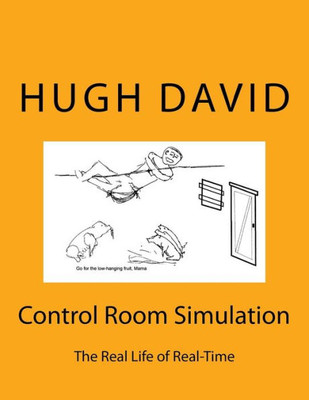

Control Room Simulation: The Craft of Real-Time Simulation in Real Life, describing how large scale real-time simulations are planned, executed and ... simulation to show what really happens.
CreateSpace Independent Publishing Platform
ISBN13:
9781979383820
$26.09
Chapter 1 explains why this book was needed, and why it has not previously been written. Real-Time simulation of control rooms has been an empirical practice in Air Traffic Control for many years. It is increasingly relevant to other fields of human endeavour such as railways, seaways, goods, electricity, gas and water systems and many other control rooms. The spread of digital technology has reduced the area-specific elements and leads to control rooms based on human requirements, which do not vary in different fields. To set the scene, Chapter 2 describes the Air Traffic Control system, as it exists in most developed countries. Chapter 3 discusses different types of Real-Time simulation, as used for training, exploring new methods and revising the allocation of airspace into sectors. Chapter 4 sketches what is involved in terms of investment in time, effort and resources (hardware and software) in building and running a large-scale Real-Time Control room simulator. Chapters 5 to 14 describe the complete process of Real-Time Control room simulation, from the initial definition to the final report. To add interest, an example is provided. First, the most important part of preparation, the people, staff and participants, are considered (Chapter 5). It is very important that these are participants - not subjects. They are usually trained Air traffic controllers, familiar with the area and its problems. As such they are a vital resource, and it is essential to make the best use of their knowledge. Chapter 6 discusses the process of defining the aims of a simulation. This is the most important phase of any simulation, but is often skimped or taken for granted, leading to eventual disaster. Chapter 7 discusses the problems of obtaining the working material for simulations. A discussion of the thorny problems of experimental design follows in Chapter 8. Serious conflicts often occur between the requirements for scientific rigor and the practical interests of the participants. There are also problems in reconciling the serviceability problems of large-scale simulations and the balance of experimental design Chapter 9 discusses types of possible measurement, their targets and relevance to practical problems. Chapter 10 suggests measurements that are usually useful, and some that may be useful sometimes. Chapter 11 gives examples of the preparation for a simulation, while Chapter 12 discusses the actual running of a simulation. Chapter 13 gives a brief discussion on methods for the analysis of these measurements, concentrating on practical problems rather than on scientific methodology. Chapter 14 gives a guide to the presentation of the results of a simulation Chapter 15 suggests possible future developments. In particular, it emphasises how control is changing, Future trends in control rooms, which will be reflected in simulation, include increasing modularity of both hardware and software, Increased integration of data sources, migration from hands-on control to supervisory control with only occasional intervention, predictive displays, showing what will happen if a proposed order is implemented, warning displays in response to emergencies, displays to help the operator resume direct control from a passive or supervisory mode. On a longer time scale, operator-system interfaces using artificial Intelligence will be introduced. Chapter 16, the final chapter, summarises the overall message of this book. References and Recommended reading are also provided. Appendix 1 is a description of some potential measurement methods. Appendix 2 is a complete Real-Time Simulation Report, based on the simulation described in Chapters 5 to 14. Appendix 3 is a conference paper describing the same simulation. Appendix 4 provides a 'PowerPoint' presentation of the simulation, with the presenter's notes, to illustrate how the simulation would be presented verbally. Appendix 5 shows a poster presentation of the same simulation.
- | Author: Hugh David
- | Publisher: CreateSpace Independent Publishing Platform
- | Publication Date: Nov 27, 2017
- | Number of Pages: 304 pages
- | Language: English
- | Binding: Paperback
- | ISBN-10: 1979383820
- | ISBN-13: 9781979383820
- Author:
- Hugh David
- Publisher:
- CreateSpace Independent Publishing Platform
- Publication Date:
- Nov 27, 2017
- Number of pages:
- 304 pages
- Language:
- English
- Binding:
- Paperback
- ISBN-10:
- 1979383820
- ISBN-13:
- 9781979383820





